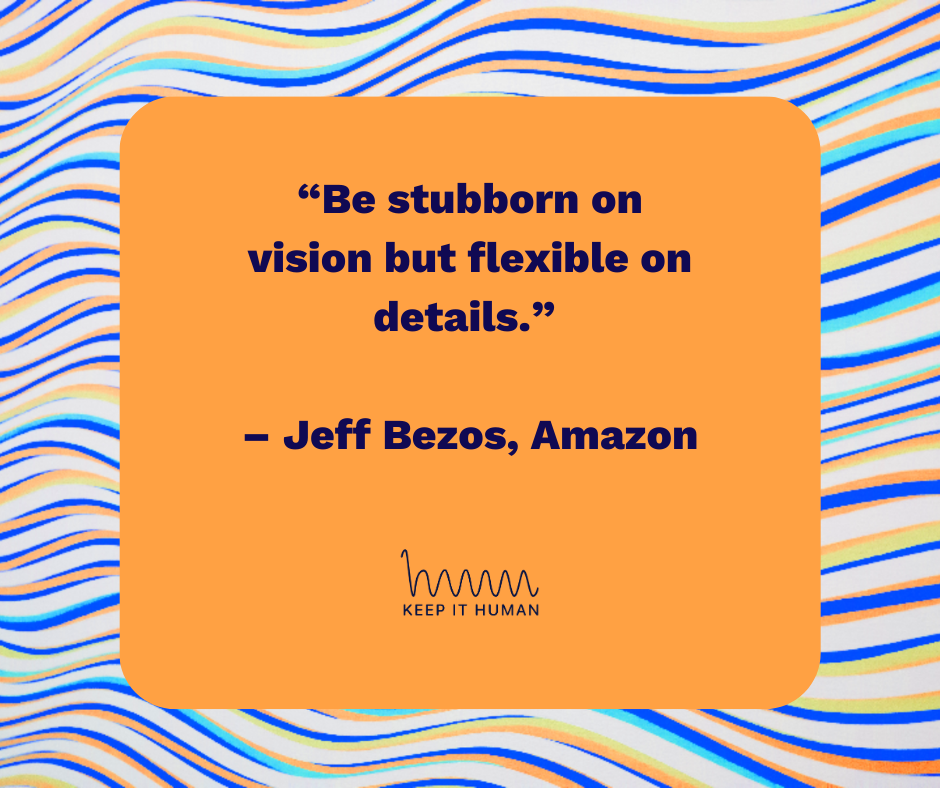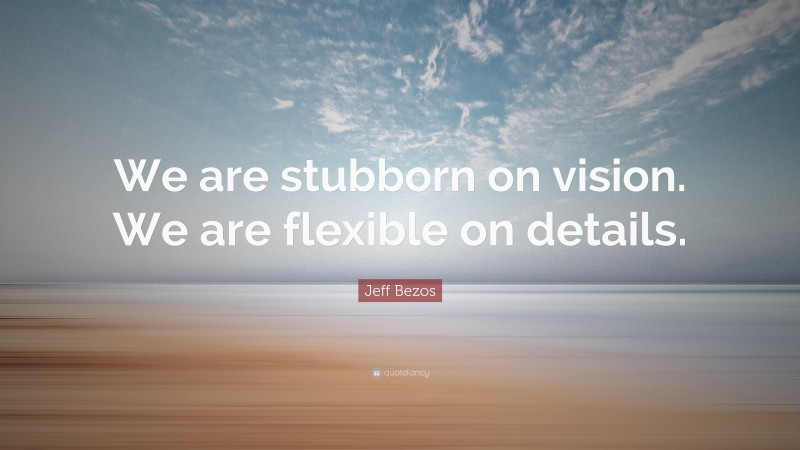Be Stubborn On Vision And Flexible On Journey

Business leaders and entrepreneurs are being urged to embrace a strategy of unwavering vision coupled with adaptable execution, a framework increasingly recognized as vital for success in today's volatile market.
This approach, dubbed "Be Stubborn On Vision And Flexible On Journey," emphasizes the importance of a clear, unshakeable long-term goal, while simultaneously advocating for agility and responsiveness in the methods used to achieve it.
The Core Principle
The central idea is simple: know where you want to go, but don't be rigid about how you get there.
Market conditions, technological advancements, and unforeseen challenges often demand course correction, making rigid adherence to a predetermined plan a potential recipe for failure.
Why This Matters Now
The current economic climate, characterized by rapid technological disruption and shifting consumer preferences, necessitates a strategic balance between conviction and adaptability.
A recent study by McKinsey found that companies that successfully pivoted their strategies in response to the COVID-19 pandemic were 2.8 times more likely to achieve above-average revenue growth.
"The world is changing faster than ever before," stated Dr. Anya Sharma, a leading business strategist at the Harvard Business School. "A clear vision provides the North Star, while flexibility allows you to navigate the storms."
Examples in Action
Netflix, initially a DVD rental service, successfully transitioned to streaming, demonstrating a willingness to adapt its business model to changing consumer habits.
Amazon, starting as an online bookstore, has expanded into cloud computing, artificial intelligence, and numerous other sectors, consistently demonstrating flexibility in its approach to growth.
Practical Implementation
Several key steps can help organizations implement this approach. First, articulate a clear and compelling vision statement that defines the long-term goals.
Second, foster a culture of experimentation and learning, where employees are encouraged to try new things and learn from failures.
Third, establish robust feedback loops to monitor progress and identify areas where adjustments are needed. This also includes regular market research, customer surveys, and competitive analysis.
Potential Pitfalls
It is important to differentiate between flexibility and a lack of direction.
Constantly changing course without a clear vision can lead to confusion and inefficiency. The vision provides an anchor. The flexibility allows movement within the scope of this vision.
Expert Opinions
"The key is to be stubborn about the 'what' and flexible about the 'how'," explains John Carter, CEO of Growth Dynamics, a leading consultancy firm. "Don't compromise on your core values or your ultimate goals, but be open to exploring different paths to get there."
"Leadership must cultivate an environment where experimentation is encouraged, and failure is seen as a learning opportunity," says Sarah Chen, author of "The Agile Advantage."
Next Steps
Business leaders are encouraged to re-evaluate their current strategies and assess the extent to which they are embracing both vision and flexibility.
Workshops and training programs are increasingly available to help organizations develop the skills and processes needed to navigate today's dynamic business environment.
Ongoing research is focused on identifying the specific factors that contribute to successful adaptation and resilience in various industries, with findings expected to be released in the coming months.


















